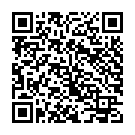Document details

Abstract
The protection of the dark and (radio) quiet sky is one of the key aspects of the ESA Zero Debris Charter. The International Astronomical Union Centre for the Protection of the Dark and Quiet Sky from Satellite Constellation Interference (IAU CPS) promotes technical and policy recommendations to industry partners that enable such protection. The SatHub is one of the four IAU CPS hubs. SatHub has about 200 volunteer members, consisting mainly of both professional and amateur astronomers. Its focus is on gathering observations, data analysis, software, services, and training materials to improve our understanding of the impact of satellite constellations on astronomy and observers worldwide and across astronomical disciplines.
In this contribution we discuss current IAU recommendations as well as current challenges for the coexistence of satellite constellations and ground based astronomy. Ultra-bright beams of satellites communicating with their ground receivers, for instance, can render radio observatories such as the SKA-low completely blind for extended periods of time. Unintended Electromagnetic Radiation from satellites, too, can interfere with radio observations. National borders and policies can put limits on radio protection zones. Large, direct-to-cell satellites that reflect sunlight back to the ground can be as bright as the brightest objects on the night sky. The sunlight reflected off such satellites would cause “whiteouts” of entire CCDs of billion dollar astronomical sky survey facilities such as the Vera C. Rubin Observatory. Modeling the non-uniform distribution and brightness of satellites and predicting when they reflect satellites is one possible mitigation strategy for ground based observatories, but there are significant challenges. Brightness modeling either requires partly privileged satellite operator information on satellites and laboratory time, or substantial observation time on already oversubscribed telescopes. The crowding of Low-Earth Orbit further hampers active satellite avoidance strategies for telescopes due to the ever increasing rate of satellite maneuvers. A large number of collision avoidance maneuvers can limit the accuracy of long term satellite orbit predictions. Moreover, crowed near-Earth space comes with additional challenges for adaptive optics as artificial guide stars crucial for wave-front sensing have to be turned off by default when satellites pass overhead so as not cause damage to satellites. Glinting space debris can also pose a challenge to astronomical transient alert streams. Last but not least, a large number of constellation satellites will change the appearance of the night sky forever.
Both astronomers and industry partners of the CPS are working on strategies for coexistence. We will touch on related services and tools currently in development.
The key to mitigating satellite constellation interference is to work with all stakeholders in an open and constructive manner. This is one of the principles of the IAU CPS.
Preview








